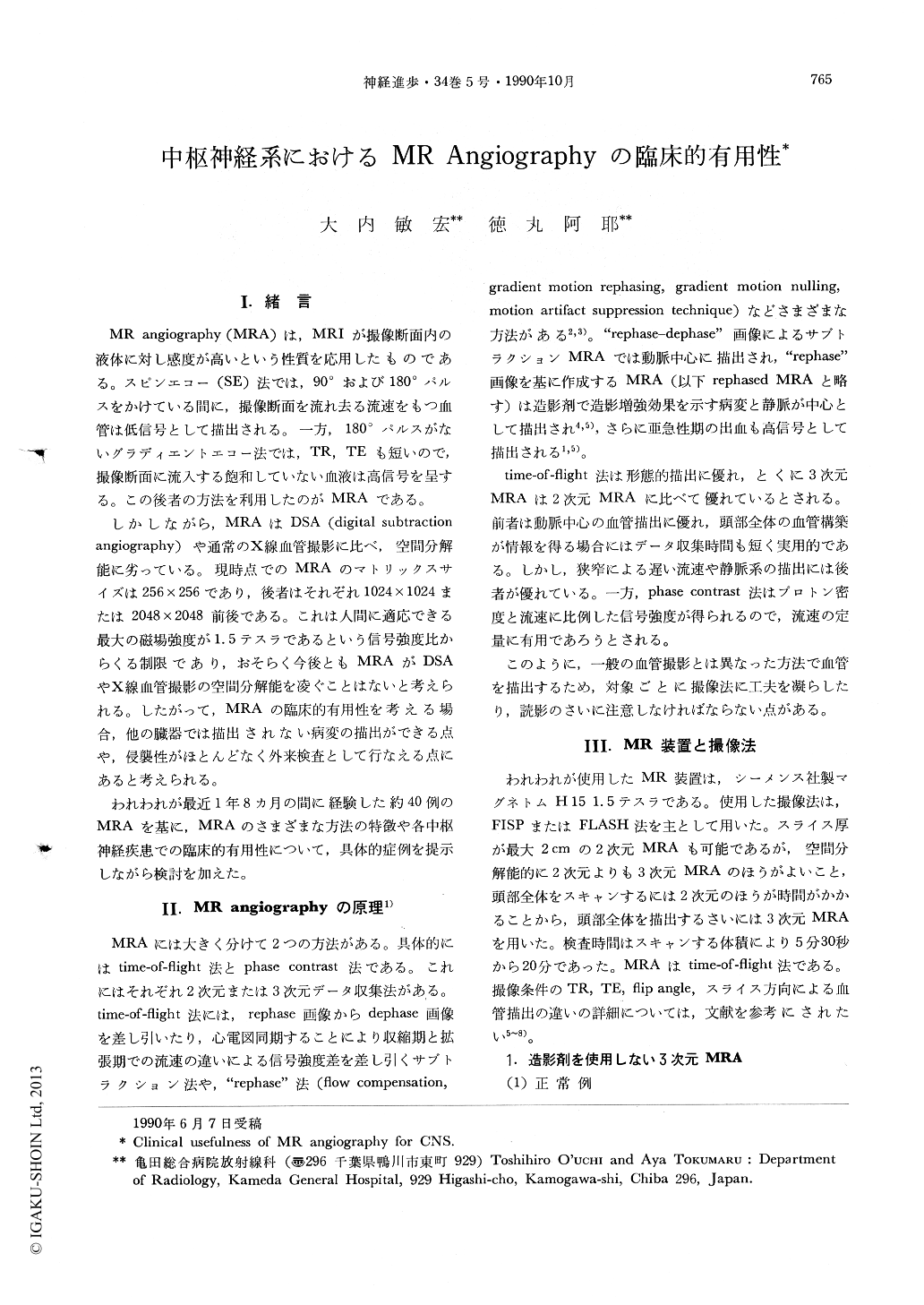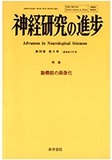Japanese
English
- 有料閲覧
- Abstract 文献概要
- 1ページ目 Look Inside
I.緒言
MR angiography(MRA)は,MRIが撮像断面内の液体に対し感度が高いという性質を応用したものである。スピンエコー(SE)法では,90°および180°パルスをかけている間に,撮像断面を流れ去る流速をもつ血管は低信号として描出される。一方,180°パルスがないグラディエントエコー法では,TR,TEも短いので,撮像断面に流入する飽和していない血液は高信号を呈する。この後者の方法を利用したのがMRAである。
しかしながら,MRAはDSA(digital subtractionangiography)や通常のX線血管撮影に比べ,空間分解能に劣っている。現時点でのMRAのマトリックスサイズは256×256であり,後者はそれぞれ1024×1024または2048×2048前後である。これは人間に適応できる最大の磁場強度が1.5テスラであるという信号強度比からくる制限であり,おそらく今後ともMRAがDSAやX線血管撮影の空間分解能を凌ぐことはないと考えられる。したがって,MRAの臨床的有用性を考える場合,他の臓器では描出されない病変の描出ができる点や,侵襲性がほとんどなく外来検査として行なえる点にあると考えられる。
Magnetic resonance angiography (MRA) is a new technique using high sensitivity to flowing material in the scanning plane. There are mainly two methods of MRA, phase contrast and time of flight. Former method is useful to detect fast and slow flow and to reflect flow velocity. Cine mode display of flow pattern is also available. Latter method is useful to get morphological information of arterial structure rather than venous structure.
Rephased MRA with Gd-DTPA administration demonstrated contrast enhanced lesions and subacute phase of bleeding which was hardly detected by DSA or conventional angiography. This feature may be one of merits of MRA.

Copyright © 1990, Igaku-Shoin Ltd. All rights reserved.


